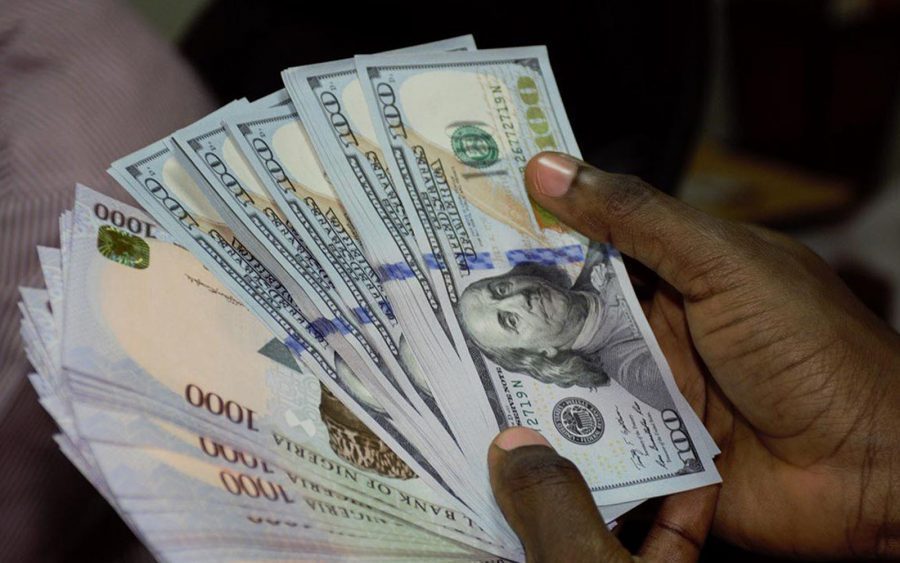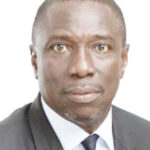Over the past years, the Central Bank of Nigeria Monetary Policy Committee has been meticulous in carving out Nigeria’s monetary policies in line with the current economic realities.
These policies affect different sectors, but the country’s exchange rate has received significant attention due to fragility to external shocks.
To the this end, the Central Bank Governor, Mr. Godwin Emefiele at the opening ceremony of the Regional Course on Exchange Rate Regimes and Policies, organized by the West African Institute for Financial and Economic Management (WAIFEM) underscored the relevance of the apex bank’s monetary policy measures in ensuring stability in the economy.
Exchange Rates Determinants in Nigeria
Highlighting the factors that determine the exchange rate in the country, Emefiele in his keynote address said “Nigeria amongst the overarching goals of the Central Bank of Nigeria, is to achieve exchange rate stability that ensures a viable external sector, anchor inflationary expectations, improve and support economic growth. The objectives of its exchange rate policy in Nigeria, therefore, are to preserve the value of the domestic currency, maintain a favourable external reserves position and ensure external balance without compromising the need for internal balance and the overall goal of macroeconomic stability.
“Our choice of exchange rate regime(s) has at all times been determined by the prevailing economic fundamentals. It is not uncommon that the dynamics of the external and domestic economy lead to a change in regime.
“Indeed, global economic and financial crisis, pandemics, currency crisis, commodity supply shocks and geopolitical tensions to name a few have determined the choice of our exchange rate regime. Moreover, for emerging developing economies like Nigeria where the demand for imports remains high, an appropriate exchange rate regime is required to safeguard capital outflow and ring-fence the external reserves,”
CBN’s Monetary Policies on Exchange Rates
Speaking further, Emefiele explained that “The thrust of exchange rate management by the Central Bank of Nigeria is to allow the market system to determine the exchange rate parity in an efficient manner devoid of the activities of speculators and rent-seekers. Moreover, the Central Bank of Nigeria has undertaken various initiatives to support the diversification of the Nigerian economy from the reliance on crude-oil export as a major source of foreign exchange.
“The CBN development finance initiatives provide credit for the real sector to stimulate domestic production, particularly in the agriculture and industrial sectors that have huge potential to earn foreign exchange. A major goal is to reduce the pressure on the domestic currency.
“Since the inception of the Central Bank of Nigeria in 1959, the Bank has undertaken several exchange rate management regimes. Each regime has its challenges and success which I believe you would learn about during the course of this programme.
“The Foreign exchange market was liberalized with the establishment of the Dual Exchange Rate System from September 1986 – April 1987. Under this regime, the exchange rate was determined by auction, there was a dual exchange rate system, and the central bank intervened in the foreign exchange to stabilise the exchange rate. The unethical practices that arose under the regime led to the introduction of the Dutch Auction System (DAS) in April 1987 and by July 1987 followed by the unified exchange rate system which lasted up till 1988. The excessive demand for foreign exchange under this regime was fueled largely by expansionary fiscal policy as a result there was massive depreciation of the naira.
“The Bank continue to modify the management of the foreign exchange market in line with the dictates of the internal and external economy and the Inter-Bank Foreign Exchange Market was established in 1989 and in 1990, the Dutch Auction System was introduced under which the Bank licensed the Bureaux the Change (BDCs) to provide foreign to provide exchange rate for small end users.
“Again, to stabilise the market and promote exchange rate stability the Re-Introduction of the Retail Dutch Auction (rDAS) was introduced in October 2013-February 2015. Under the regime, all authorized dealers are eligible to participate, and unutilized funds were be refunded to the CBN within 2 business days after disbursement, the midpoint of the official window of the foreign exchange market from ₦155/US$ to ₦168/US.
“The Closure of rDAS and movement of all eligible demand for forex to the interbank segment February 18, 2015 – January 11, 2016. The policy thrust includes the exclusion of 41 imported items from the Nigerian foreign exchange market in June 2015.
Also, the Bank discontinued forex sales to BDCs on January 11, 2016. The operators were to source their forex from autonomous sources.
“Interbank Foreign Exchange Market in February 2016 and put in place guidelines for the operations of the market-driven exchange rate for the naira. This exchange rate regime also narrowed the gaps between the official interbank and parallel market rates and thereby discouraged the rent-seeking activities of speculators,” the apex bank governor explained.
On the recent MPC decisions, he added that “In March 2020, the CBN adjusted the official exchange rate by 15.0 percent from ₦305/US$ to ₦360/US$ and in July 2020 there was a further adjustment to ₦380/US$ and ₦410/US$ in the first quarter of 2021.
” The importation of milk, dairy products, maize and corn was restricted to encourage local production, which also dovetailed into the Bank’s backward integration programme in the first and third quarters of 2020.
On March 8, 2021, CBN introduced the “Naira 4 Dollar Scheme”, intended to boost the inflow of diaspora remittances into the country. All recipients of diaspora remittances through CBN licensed IMTOs to pay N5 for every US$1 received as remittance inflow. The initiative has recorded high success. Furthermore, the Central Bank of Nigeria, introduced the Investors and Exporters (I&E) Forex window to enable investors and exporters to purchase and sell forex at the prevailing market rate. This attracted over US$50 billion in investment to the country within 3 years,”. Emefiele further explained
Recall that in July 2021, the CBN stopped foreign exchange sales Bureaux De Change (BDCs) and commercial banks assumed the roles of providing foreign exchange to meet the needs of small end-users. Fx form A was filled electronically online to prevent illegitimate demand and conserve the external reserves.
Another recent policy to increase supply to the foreign exchange market under is the introduction of the RT200 FX Programme, which stands for the Race to US$200 billion in FX Repatriation, is a set of policies, plans, and programmes for non-oil exports that will enable Nigeria to attain the lofty goal of US$200 billion in FX repatriation, exclusively from non-oil exports, over the next three to five years.
It would also be recalled that at the last MPC given the uncertainties facing the global economy, particularly rising inflation and the pace of monetary policy normalization amongst the advanced economies and the challenges it will pose to developing countries such as Nigeria such as reduction in capital inflow, the policy rate was raised at the last MPC by 150bp from 11.5% to 13%.
Emefiele commended WAIFEM under the Director General, Dr Baba Yusuf Musa which has been unrelenting in contributing immensely to the building of capacity in research; macroeconomics, debt, financial sector management, governance and institutional development across the sub-region.
In his welcome remarks, Dr. Musa stressed that the Regional Course on Exchange Rate Regimes and Policies aims at introducing participants to the different regimes of exchange rate arrangements available to any economy.
He said: “The course also addresses the factors relevant for the choices and consequences that may be associated with these selections. Participants are also expected to gain a deeper understanding of the different exchange rate regimes and to be exposed to the appropriate exchange rate policies for developing countries.”
Dr Musa argues that reasons justifying the concentration of attention on the exchange rate are not farfetched as exchange rates affect cross-border economic transactions. Trade, investment, finance, tourism, migration, and many more are all profoundly influenced by international monetary policies, and again as economies become globalized” more firms, investors, and workers find their fortunes linked to the exchange rate, and its impact on trade and financial flows.
He said: “Theoretically, an open-economy macroeconomic principles imply that capital mobility profoundly affects exchange rate policy choices. As a result, the government of a financially integrated economy face a choice between monetary policy autonomy and a fixed exchange rate. If governments opts for a fixed rate, capital mobility makes impossible a monetary stance different from that of the anchor currency.
“Alternatively, if governments opts to sustain an independent monetary policy, they must allow their currencies to float.
These constraints mean that the economics and politics of monetary and exchange rate policy are likely to be very different in an open economy than an economy that is not. In as much as international economic integration involves increased exposure to international financial and commercial flows, it heightens the concerns of those involved or exposed to international trade and finance,”
He noted that all the currencies in WAIFEM member-countries are non- convertible hence the importance of policy-makers to appreciate the skills necessary to manage exchange rates.

 Join Daily Trust WhatsApp Community For Quick Access To News and Happenings Around You.
Join Daily Trust WhatsApp Community For Quick Access To News and Happenings Around You.


